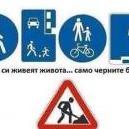Силно ЕМП от GSM клетка
-
Теми
-
Руско-украинската война 2022-2024 година. 1 2 3 4 41
От Р. Теодосиев, in Руско-украинската война 2022 година.
- 1015 мнения
- 39515 views
-
- 19 мнения
- 433 views
-
Какви оръжия би могла България да изпрати на Украйна 1 2 3 4 8
От Р. Теодосиев, in Руско-украинската война 2022 година.
- 197 мнения
- 8492 views
-
Мемове, свързани с руско-украинската война през 2022 година 1 2 3 4 16
От nik1, in Руско-украинската война 2022 година.
- 383 мнения
- 25915 views
-
Много повече ли са били някога психопатите и социопатите? 1 2 3 4 26
От Хранислав, in Психология и Логика
- 649 мнения
- 16547 views
-
-
Последно разглеждащи 0 Потребители
- No registered users viewing this page.




Recommended Posts
Напиши мнение
Може да публикувате сега и да се регистрирате по-късно. Ако вече имате акаунт, влезте от ТУК , за да публикувате.